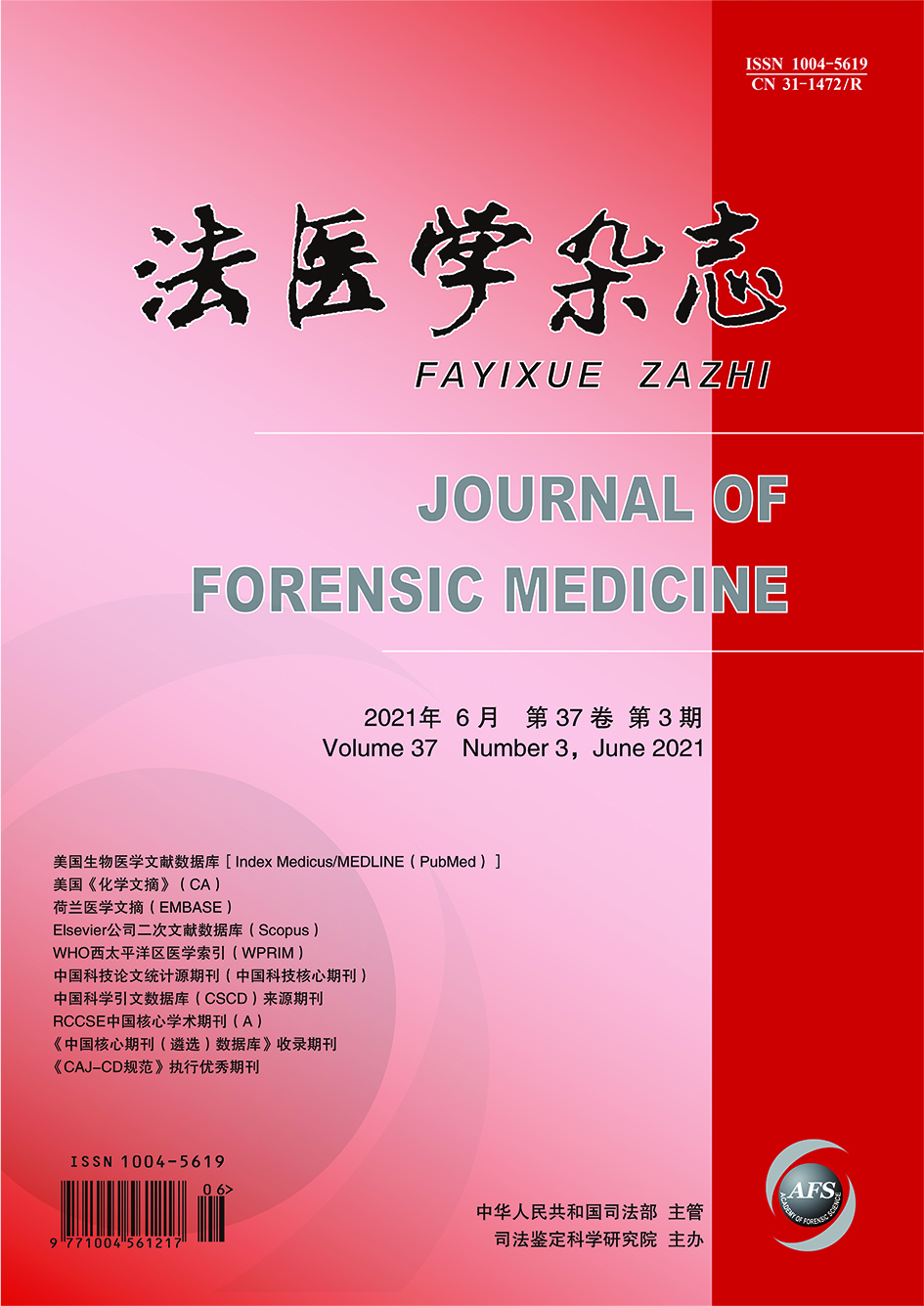|
|
Transcriptome Sequencing Analysis of Chrysomyia Megacephala Pupae in Different Growing Periods
WANG Qi-yan, ZHANG Hong-ling, REN Zheng, et al.
2021, 37(3):
318-324,331.
DOI: 10.12116/j.issn.1004-5619.2020.401214
Objective To study the growth regulation, environmental adaption and epigenetic regulation of Chrysomyia Megacephala pupae, in order to obtain the transcriptome data of Chrysomyia Megacephala in different growing periods, and lay the foundation for forensic application. Methods The Chrysomyia Megacephala was cultivated and after pupation, 3 pupae were collected every 24 h from pupation to emergence, and stored at -80 ℃ for later use. High-throughput sequencing was performed by Illumina Hiseq 4000 and Unigenes were obtained. The Unigenes were compared by comparison tool BLAST from NCBI in databases such as NR, STRING, SWISS-PROT (including Pfam), GO, COG, KEGG in order to obtain the corresponding annotation information. The expression amount of Unigenes obtained by sequencing in Chrysomyia Megacephala in six different growing periods was calculated by FPKM method, and the discrepant genes were screened according to the following standards: the log2 multiple absolute value of FPKM expression amount between two different growing periods must be larger than 1 (log2|FC|>1), and the false discovery rate must be less than 0.05. Results When the mean temperature was 25.6 ℃, Chrysomyia Megacephala emerged 6 d after they pupated. A total of 43 408 pieces of Unigenes were obtained and their mean length was 905 bp, of which 32 500, 18 720, 13 542, 9 191 and 18 720 pieces were annotated by NR, SWISS-PORT, Pfam, STRING and KEGG databases. According to the discrepant gene analysis of pupae in two different growing periods, the number of genes with variants ranged from 801 to 5 307, and the total number of discrepant genes was 45 676. Conclusion The gene expressions of the transcriptome data of Chrysomyia Megacephala pupae in different growing periods are different. The results provided a good foundation for further research on the transcriptome changes in each period of the pupae of sarcosaprophagous flies and provided the basis for exploring the genes associated with the growth of Chrysomyia Megacephala pupae.
Related Articles |
Metrics
|


